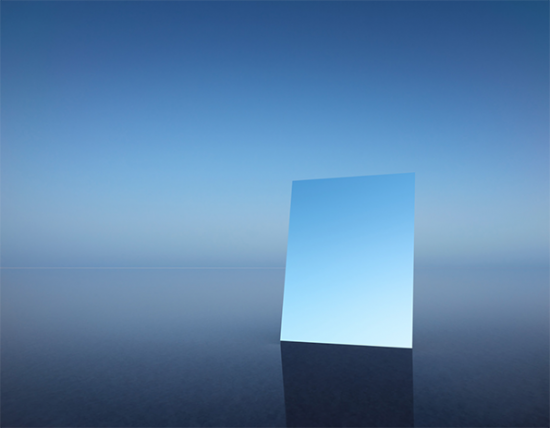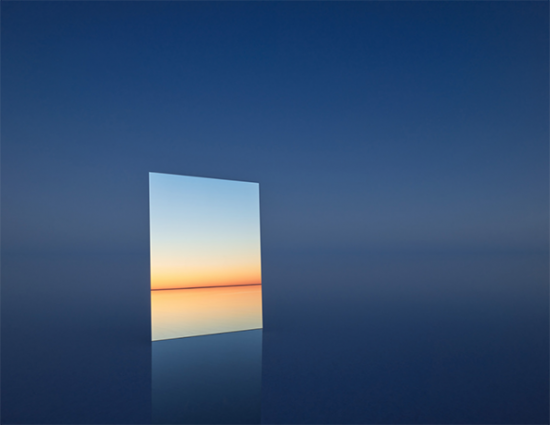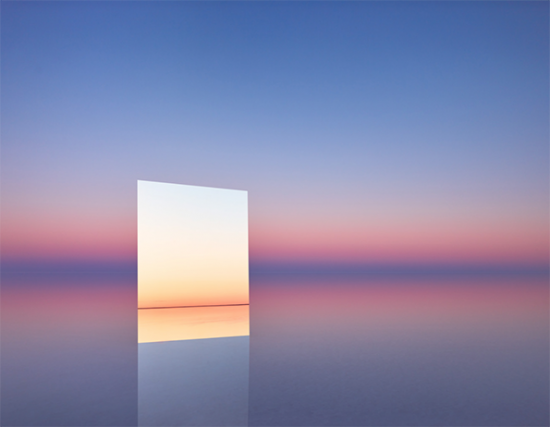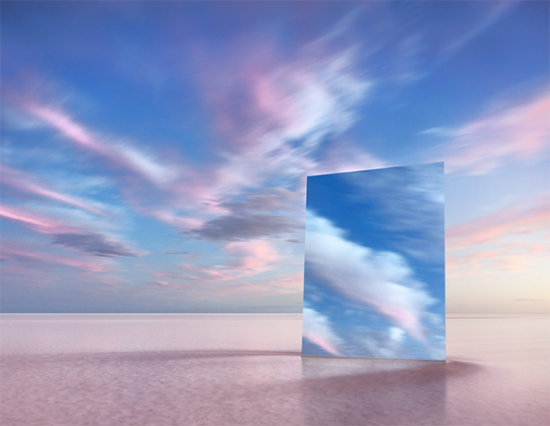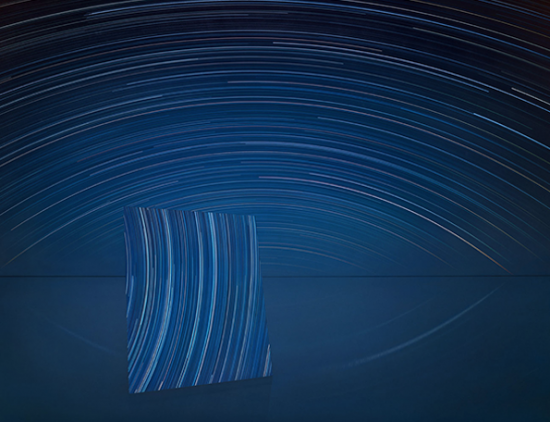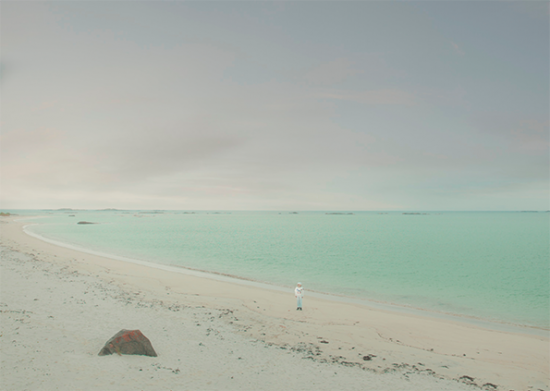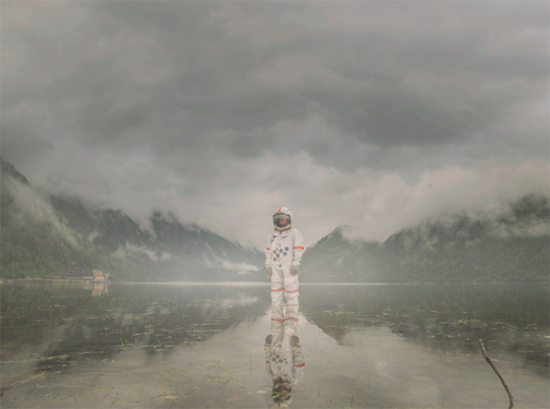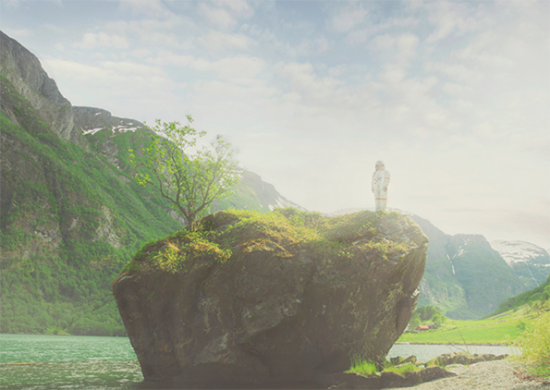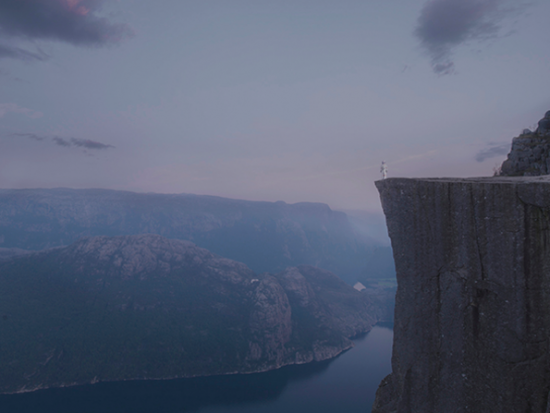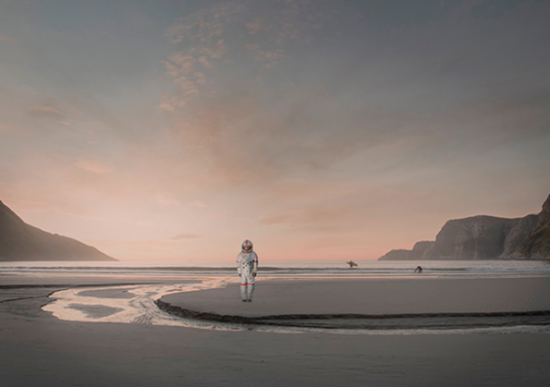George Shaw encounters new worlds…
Murray Fredericks, Mirror 14, 2017
Murray Fredericks, Mirror 25, 2017
Murray Fredericks, Mirror 16, 2017
Murray Fredericks, Mirror 18, 2017
Murray Fredericks, Mirror 5, 2017
The word Vast comes to mind when looking at Murray Fredericks’ images of Kati Thanda-Lake Eyre, the almost-dry lake that sits below sea level in South Australia, not just for the size and presence of the gallery prints, but mainly for the sublime vastness of nature that manifests itself artfully in endless variations of light and form.
After more than twenty pilgrimages to the lake since 2001, Fredericks has sought to convey an emotional journey rather than simply document an illusion. His motivation stems from an experience years ago in the altitudes of Bolivia when, while standing in an absolute depths of darkness that would give Anish Kapoor the shivers, Fredericks lost all sense of his body, feeling as if he had become one with the blackness, and everything within its fullness. At that moment, the landscape transported him beyond itself and into himself. The well-known short documentary Salt (2009) documents the excruciating beauty of the terrain Frederick’s photographs at Kati Thanda-Lake Eyre, while also revealing the evolution of his own interior landscape during those trips.
Fredericks’ first exhibition in New York at the Robert Mann Gallery is titled Vanity and represents a recent body of work in which he turns a mirror on Kati Thanda-Lake Eyre, physically and metaphorically. Concerned with the vanity and obsession for individualism that saturates Western society, Fredericks denies the symbol of vanity to the viewer, and redirects their gaze away from themselves into what he believes is something greater than ourselves.
To create these works, Fredericks worked with two large mirrors painstakingly positioned on the salt-laden, watery surface of the lake. There were two short periods of opportunity a day in which to make the edges of the mirrors ‘disappear’ by capturing the right light, at the right angle. While disrupting visual perception through the transformation of a three-dimensional object into what appears as a hole in the landscape, Fredericks does double-time by also conjuring a landscape within a landscape.
The works in Vanity are beautiful, elegant, full of grace and respect; they stand as an antidote for a society that increasingly sees itself looking downward at images framed small enough to fit in someone’s hand.
Ole Marius Joergensen, Egge, 2017
Ole Marius Joergensen, Dalen, 2017
Ole Marius Joergensen, Gudvangen, 2017
Ole Marius Joergensen, Preikestolen, 2017
Ole Marius Joergensen, Stad, 2017
At the Emmanuel Fremin Gallery, Norwegian artist Ole Marius Joergensen exhibits a series of large photographic works showing the dramatic, often otherworldly topography of his home country. It was Joergensen’s intention to capture the extraordinary beauty of various Norwegian landmarks, as a way of displaying his admiration for their environmental aesthetics. He also sought to transform the works into scenes of intriguing narrative by adding a hint of his trademark surrealism by inserting an astronaut into the landscape.
Interventions in the landscape are never easy, especially in striking locations. Questions must be asked: does the object chew up the scenery? Does it add to or subtract from the landscape? Is it arm-wrestling the composition? And the most obvious question of all, is it necessary, at all? Introducing an astronaut as a symbol of discovery into the scene requires the space to be imbued with enough ambiguity to allow narratives tethered to both landscape and explorer. However, Joergensen anchors his character heavily into the ground, going nowhere, standing at attention like a statue holding its breath until they finish taking the photo.
Many artists employ space travel themes and tropes such as astronauts in their work, but artists like Australian Adam Norton inject their characters with energy, curiosity, and a sense of purpose. Norton’s explorer is always ‘in search of…’ looking perhaps for a hint of optimism in the otherness of whichever landscape he visits. Meanwhile, somewhere in the otherness of Norway, a space traveller appears to be lost in the landscape.
